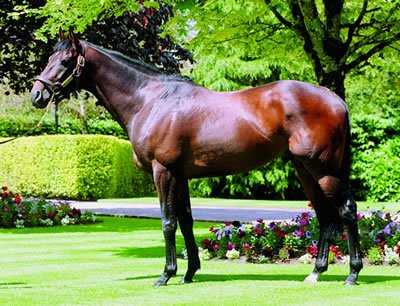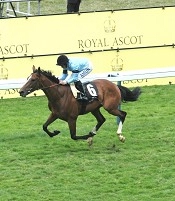3 minute read
Timeform look back on three of the best winners of the King George VI & Queen Elizabeth Diamond Stakes from this century.
Montjeu - 2000
Trained in France by the Kent-born John Hammond, Montjeu didn’t make an appearance in England until he was four years old, his first assignment on these shores being the 2000 King George VI and Queen Elizabeth Diamond Stakes. Montjeu had already established himself as a top-class horse, however, having completed a French and Irish Derby double in his three-year-old campaign, in addition to winning the Prix de l’Arc de Triomphe, and was sent off as the 1/3 favourite at Ascot.

For all Montjeu’s worth had already been established, the manner in which a motionless Mick Kinane confidently cruised up on the bridle around the outside of the field and took up the lead without even the slightest urging still drew the breath. The winning margin may have been a mere length and three quarters, but Montjeu was imperious, winning the King George 'only at three parts pace' in the words of his jockey.
Memorable performances are not viewed in isolation; the performances of others add to their merit and Fantastic Light - who would finish his career as a six-time Group 1 winner - was a brave opponent against the irrepressible Montjeu in the King George of 2000. Always tough and consistent, Fantastic Light even bettered Galileo in the subsequent year's Irish Champion Stakes, but he had no answer to Montjeu, for Montjeu made good horses look ordinary because he was extraordinary.
Galileo - 2001
Galileo may have given odds-on backers a fright when making rather heavy weather of winning the 2001 King George VI and Queen Elizabeth Diamond Stakes, but it shouldn’t be forgotten that 10 of his 11 rivals were pattern-race winners, five of them successful at Group 1 level. Regular jockey Mick Kinane had looked set to miss out having been slapped with a two-day ban for careless riding, but an interim injunction was granted following a protracted legal battle, and Kinane was allowed to take the ride.
There was certainly nothing careless about the ride Kinane gave Galileo in the race itself, however, as he soon had his mount perfectly poised to strike, quickening into the lead two furlongs out. An all-action drive - far removed from the armchair ride he’d enjoyed aboard Montjeu the previous season – was required to ensure that Galileo saw off the challenge of Fantastic Light who had ranged upsides at the furlong pole, but Galileo dug deep and forged clear close home, passing the line with a two-length advantage. Galileo may have extended his unbeaten record but he rather lost his air of invincibility in the King George, failing to win with the authority of past outstanding victors. The King George may have confirmed that Galileo was merely a top-class racehorse as opposed to an all-time great, but there’s little doubt he’ll go down as one of the most successful stallions in history, sire of Frankel, Australia and New Approach among many other stars.
Harbinger - 2010
Harbinger: a portent of things to come. However, few foresaw the breath-taking performance that led to the 2010 renewal of the King George being won by a record-breaking margin of 11 lengths. Harbinger had not seen the racecourse as a two year old, and his three-year-old campaign had yielded only a maiden and Group 3 win, for all signs of promise were evident. He was a different proposition at four, however, as he won the John Porter on his return at Newbury, took the Ormonde at Chester and then ran out a visually-impressive winner of the Hardwicke. With regular rider Ryan Moore opting to partner the Derby winner Workforce in the King George, Olivier Peslier took the ride on Harbinger; it would prove to be one of the best spare rides in the history of racing!

Having travelled supremely well into the race behind the pacemaker Confront, Harbinger cruised to the front as they entered the straight and kept on drawing clear to win by a record margin. Beyond preconceptions of his merit, there’s no reason to rate Harbinger’s astonishing win as anything other than an outstanding performance: one of the greatest performances in the long and distinguished history of the King George VI and Queen Elizabeth Diamond Stakes.
Harbinger would not race again after the King George, a condylar fracture to the near-fore cannon bone cruelly ending his career. However, the visual impression created at Ascot, allied to an exception timefigure which is one of the best produced over the past 20 years, means that Harbinger goes down in history as one of the top dozen horses Timeform have ever rated.






